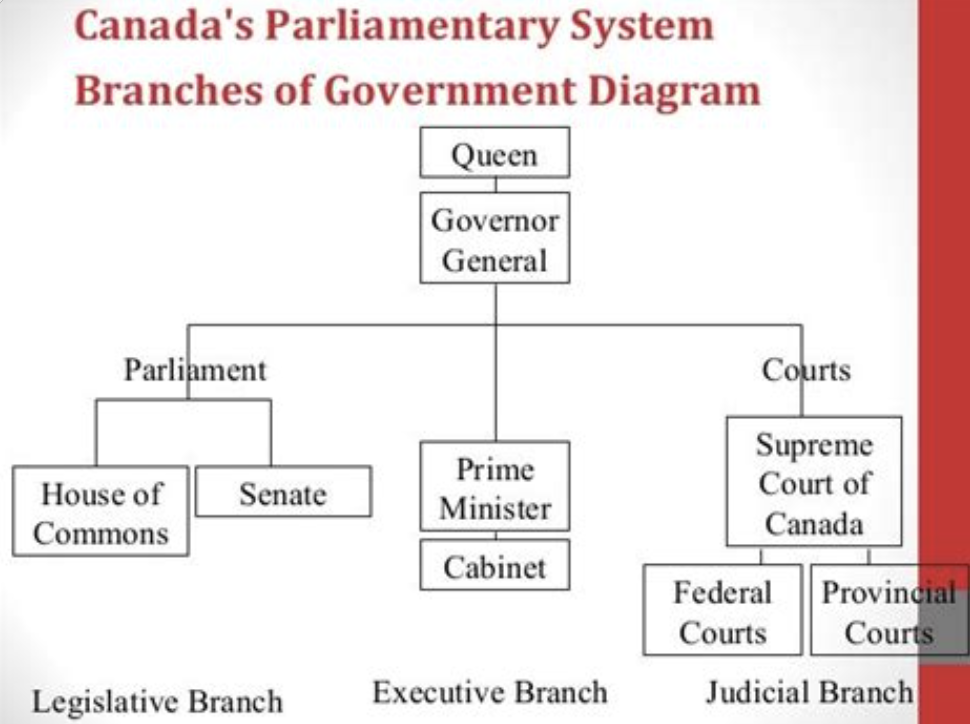Intro to Law - Notes
3 Sources of Law
Constitutional
Based on the Canadian Constitution (1867) and the Canadian Constitution (1982 - amended to include the Charter of Rights and Freedoms)
Statute
Laws passed by elected legislative bodies
Many are common law decisions that have been written into legislation
Common
Judicial rulings + case law precedent, passed by lawyers
Executive Branch
Implements + enforces laws (PM, Cabinet, civil service)
Four characteristics of Justice
Rule of Law
The rule of law focuses on the structure and governance of a legal system, ensuring that laws are applied equally and fairly across society. The three rules are:
Everyone must accept that law is necessary to regulate society
Nobody is above the law - applies to everyone regardless of status
No one can take away our rights except in accordance with the law
What’s the difference between the four characteristics of justice and the Rule of Law?
The rule of law focuses on the structure and governance of a legal system, ensuring that laws are applied equally and fairly across society. The four characteristics of justice, on the other hand, focus on moral fairness and equity, which can be applied in broader contexts beyond just legal systems.
Legislative Branch
Responsible for making and passing laws. It consists of two houses: the House of Commons (elected MPs) and the Senate (appointed members).
Executive Branch
Judicial Branch
Responsible for interpreting laws and administering justice
Court system
Supreme Court of Canada is the highest court
Federal Government
Federal Court consists of a trial and appeal division
Appeal: reviews the decisions of lower courts to determine if there is error
Trial:
Federal Jurisdiction
Area of authority and responsibility that are exclusively managed by the federal government, including matters like national defense, criminal law, immigration, trade, and banking, as outlined in the Constitution Act, 1867.
Process of passing a bill at the federal level
House of Commons → The Senate → Governor General
First reading
Introduction of the bill; a vote is taken to allow the bill to proceed.
Second Reading
General debate on the bill's principles; followed by a vote on whether to proceed.
Committee Stage
In the Committee Stage, the bill is examined in detail by a committee of MPs. Members can propose amendments, but there is usually no vote at this stage on the bill itself.
Third reading
Final debate on the bill; followed by a vote on the bill as a whole.
Senate
Bill is sent to the Senate for review; each stage includes votes similar to the House of Commons.
Royal Assent
Final approval from the Governor General; no vote, but formal approval.
Provincial Government
Municipal Government
Pass bylaws - laws that address local issues
The House of Commons
Part of Parliament that’s the most integral for making laws
MPs elected by citizens
Elections
An MP (Member of Parliament) represents a specific electoral district (riding) in the House of Commons. They are responsible for debating and voting on laws and representing the interests of their constituents.
chosen through federal elections. The candidate with the most votes in each riding becomes the MP for that area. Federal elections are held every four years or earlier if called.
An MLA is a member of a provincial or territorial legislative assembly. They make laws/policies that apply to their specific province - leader of political party with the most MLAs in the legislative assembly becomes the Premier of the province/territory
The law applies to everyone
Like cases and different cases
Laws must conform to society’s values and beliefs
Do not discriminate on the basis of irrevelant characteristics
Important to Canadian society because they ensure that the legal system is fair and accountable, and that all individual shave access to a just and equitable legal process
Majority/Minority Governments
Majority Government: When one party wins more than half the seats in the House of Commons (170 out of 338). It can pass bills more easily because it has enough votes on its own to approve legislation.
Minority Government: When no party wins a majority of seats. The governing party must rely on support from other parties to pass bills, making it more difficult and requiring negotiation and compromise
Case Titles
Criminal: R.v. (last name)
Civil: plantiff vs. defendant
Important
How does jurisdiction impact the enactment of statute laws?
It sets
boundaries for the types of laws that the diff. levels of gov are able to change/create.
Jim Crow Laws
set of laws and regulations that enforced racial segregation and discrimination in the United States, particularly in the Southern states, from the late 19th century until the mid-1960s.
These laws mandated segregation in public facilities, restricted the rights of African Americans, and were enforced through violence, intimidation, and legal penalties.
They were overturned through legal challenges and civil rights protests, but their legacy continues to impact American society.
What is the link between law and morality, and what are some examples from class?
What is the link between law and morality, and what are some examples from class?
Laws are often based on moral principles, such as the prohibition of theft or murder. In class, we discussed how laws can reflect societal values, but can also be used to challenge and change those values (abortion, racial laws, etc.)
. For example, laws against discrimination can help to challenge and change discriminatory attitudes and practices in society.
Images for Visualization (toggle)
